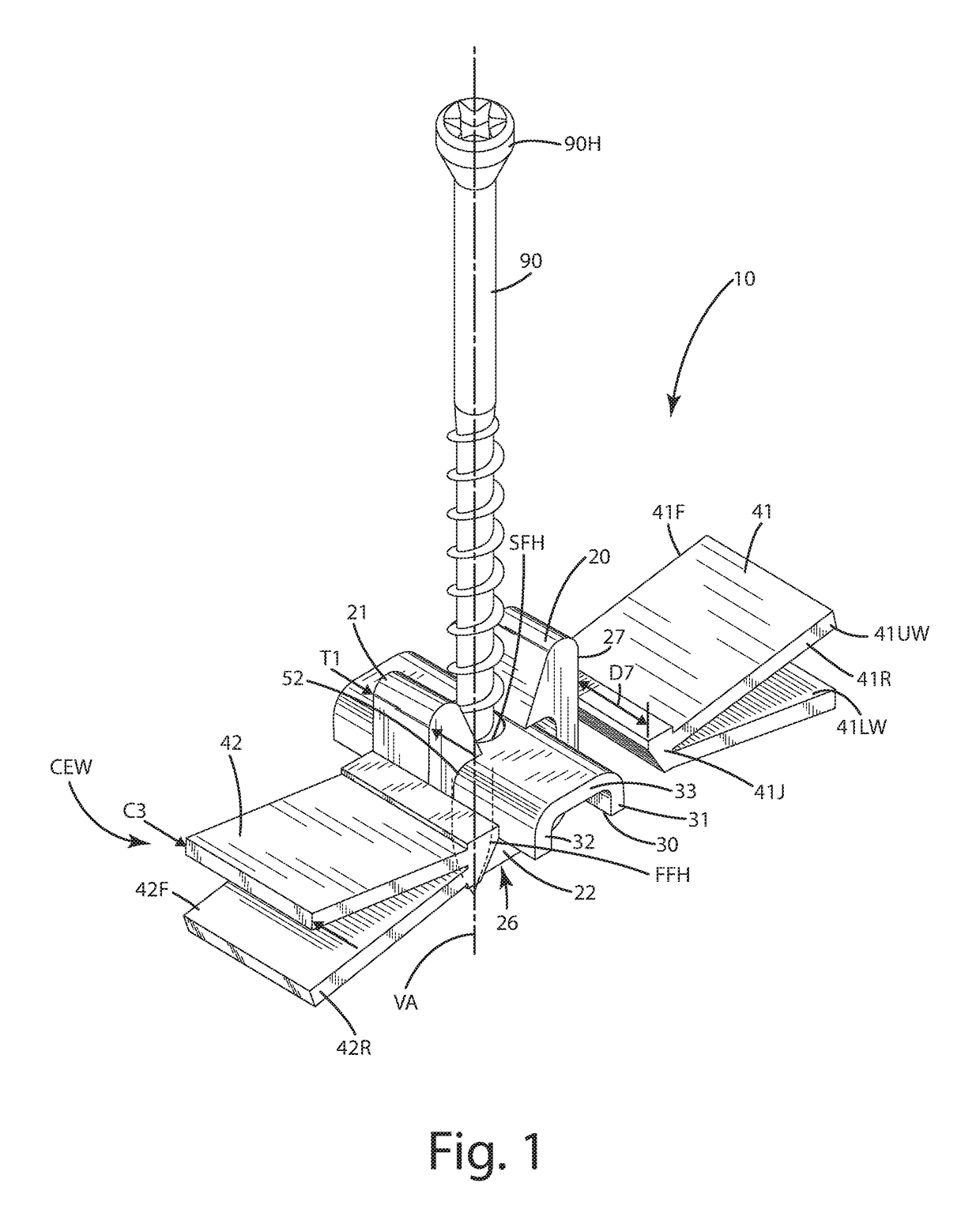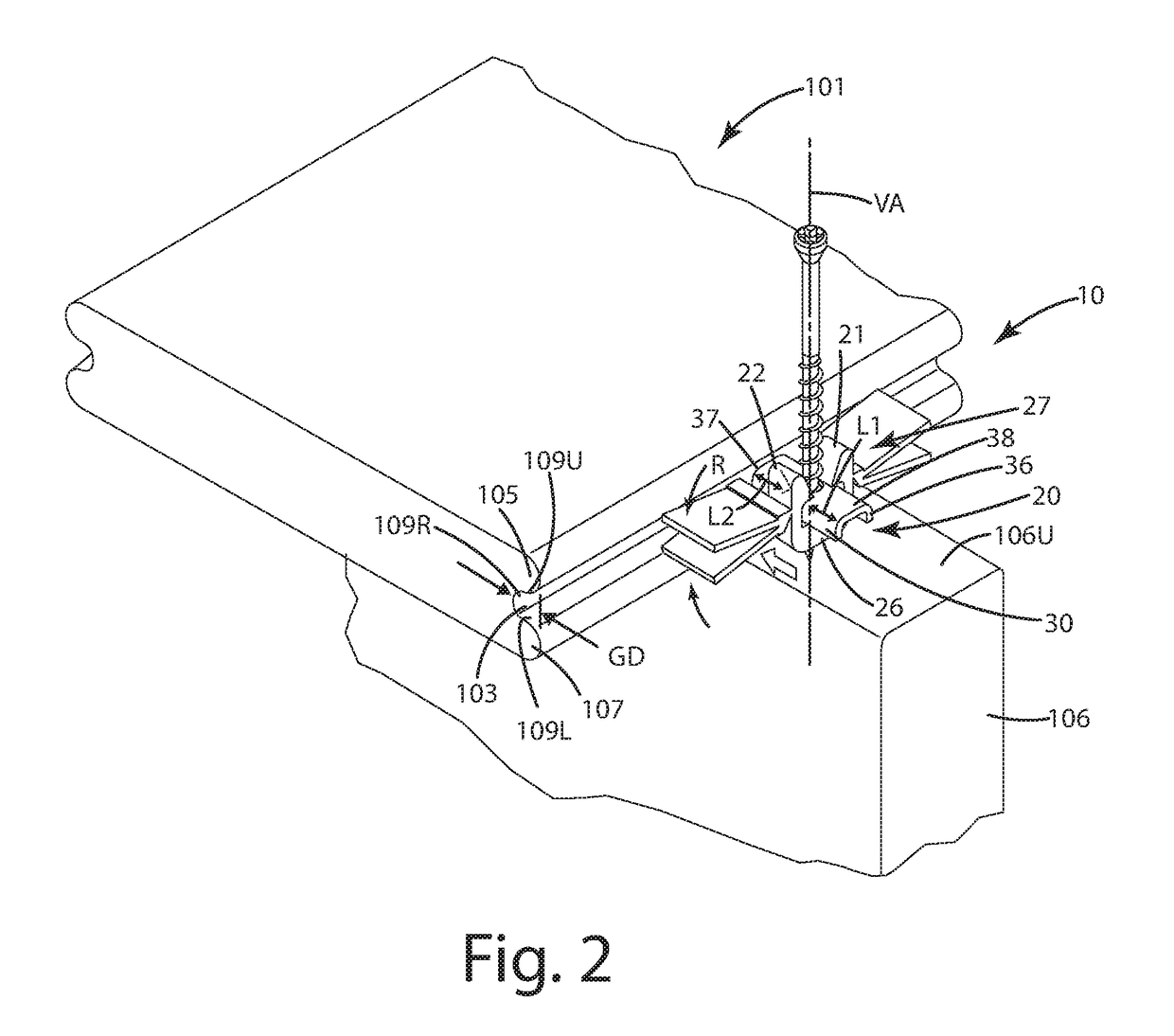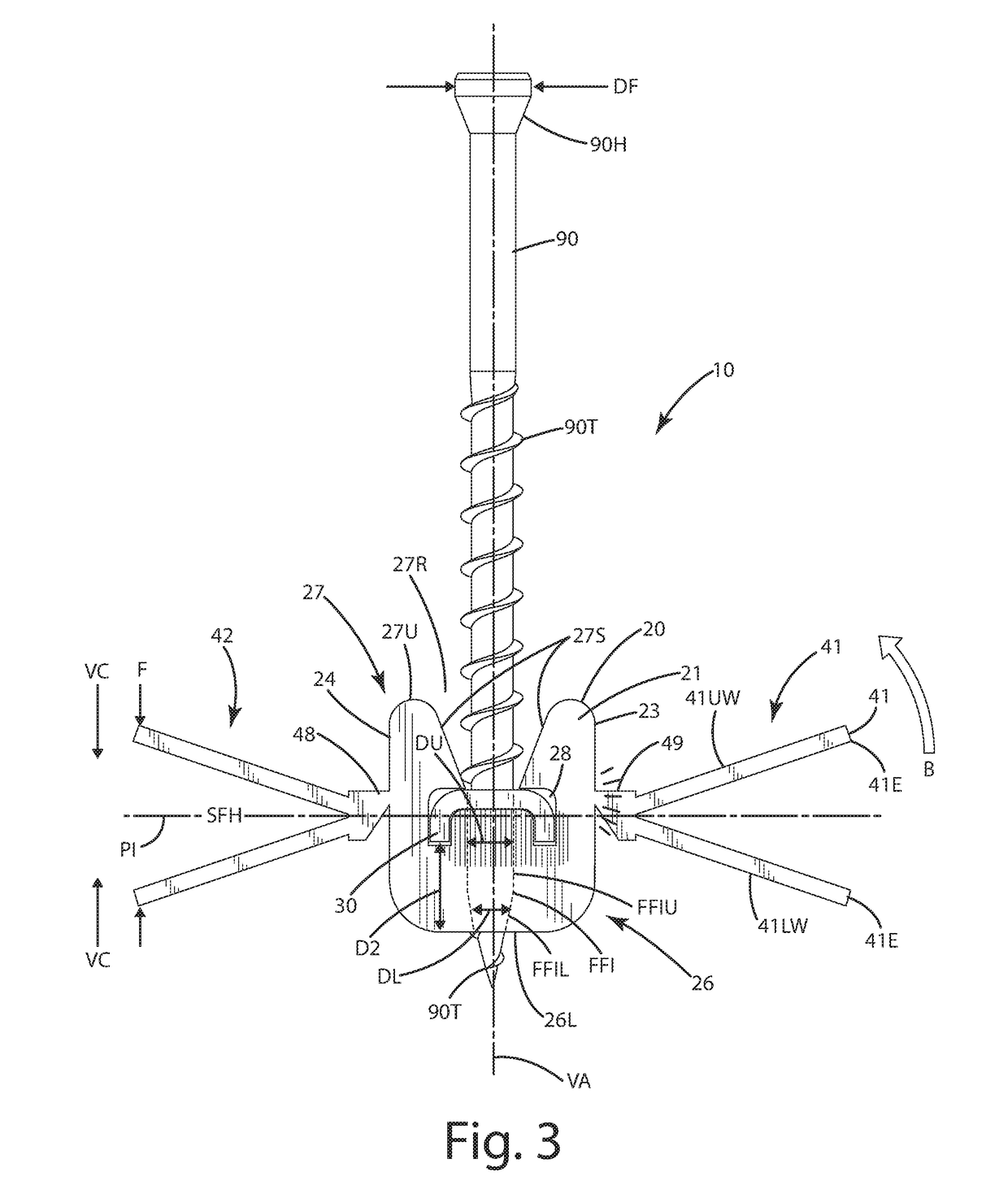Hidden fastener unit and related method of use
a fastener and hidden technology, applied in the field of fastener units, can solve the problems of affecting the safety of users, and unable to engage the groove, and achieve the effect of convenient removal and discarded
- Summary
- Abstract
- Description
- Claims
- Application Information
AI Technical Summary
Benefits of technology
Problems solved by technology
Method used
Image
Examples
embodiment 1
[0112 relates to a fastener unit adapted to secure at least one board to a support, the fastener unit comprising: a spacer body defining a first fastener hole having an upper portion having a first diameter and a lower portion, a threaded fastener disposed within the spacer body in the first fastener hole, the threaded fastener extending within the upper portion and the lower portion; a first joist leg and a second joist leg extending downward from the spacer body and configured to straddle and clamp a joist; and a grip element joined with the spacer body, the grip element defining a second fastener hole aligned with the first fastener hole, the grip element including a lower surface configured to engage a groove of a board.
embodiment 2
[0113 relates to Embodiment 1, wherein the grip element includes a pressure foot separated a distance from the spacer body by a distance, wherein the distance is configured to inset the pressure foot inward from a side surface of the board, beyond a slanted wall disposed under the groove, whereby a predetermined force can be distributed through the pressure foot to a bottom surface of the board without tipping the board.
embodiment 3
[0114 relates to Embodiment 1 or 2, wherein a first stabilizer bar extends from the first joist leg a predetermined distance, wherein a second stabilizer bar extends from the second joist leg the predetermined distance, wherein the first and second stabilizer bars are disposed at a common level, below the spacer body.
[0115]Embodiment 3 relates to any one of the preceding Embodiments, wherein each of the first and second joist legs each include outwardly extending portions that extend away from the spacer body, wherein the first and second stabilizer bars are joined with the respective outwardly extending portions.
PUM
| Property | Measurement | Unit |
|---|---|---|
| thickness | aaaaa | aaaaa |
| thickness | aaaaa | aaaaa |
| thickness | aaaaa | aaaaa |
Abstract
Description
Claims
Application Information
 Login to View More
Login to View More - R&D
- Intellectual Property
- Life Sciences
- Materials
- Tech Scout
- Unparalleled Data Quality
- Higher Quality Content
- 60% Fewer Hallucinations
Browse by: Latest US Patents, China's latest patents, Technical Efficacy Thesaurus, Application Domain, Technology Topic, Popular Technical Reports.
© 2025 PatSnap. All rights reserved.Legal|Privacy policy|Modern Slavery Act Transparency Statement|Sitemap|About US| Contact US: help@patsnap.com



